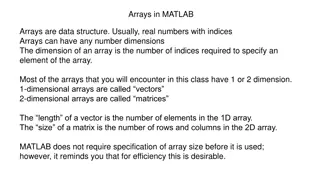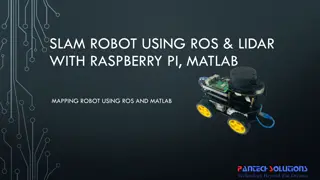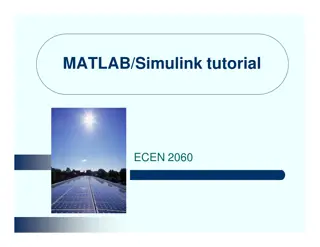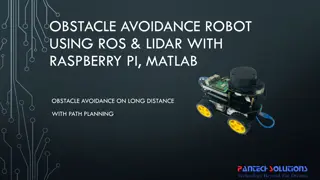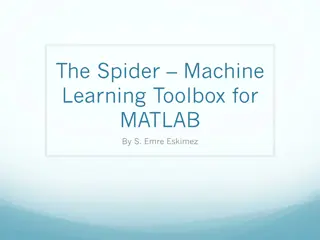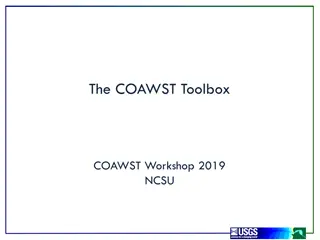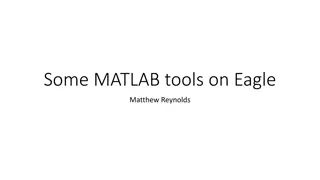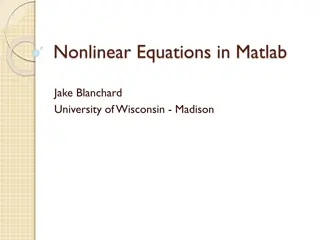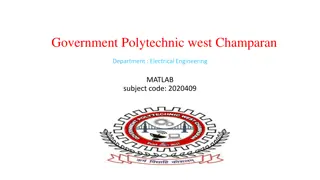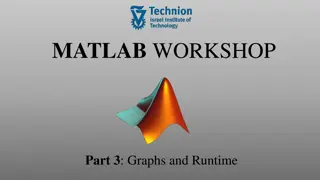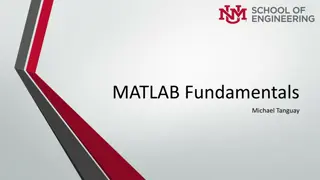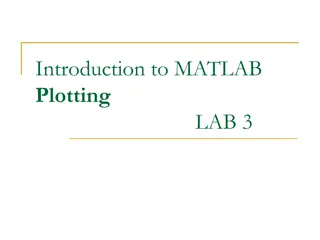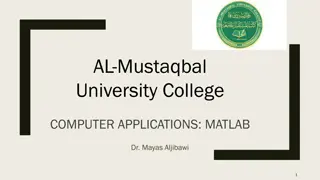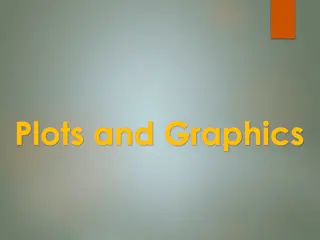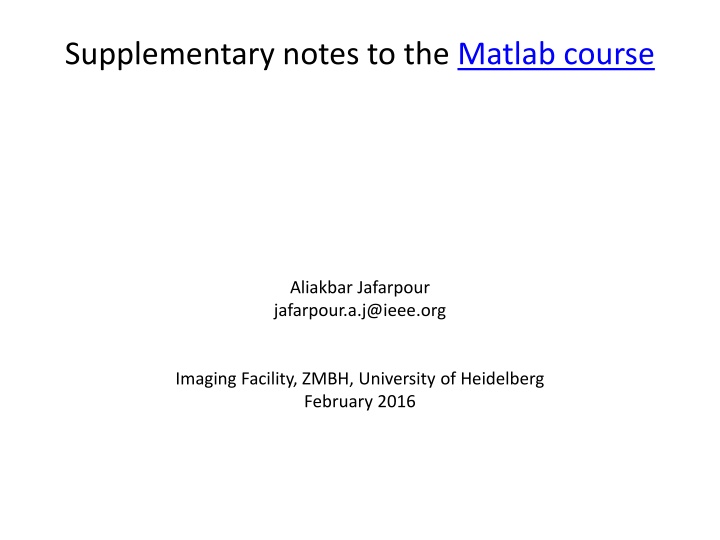
Supplementary Notes & Resources for Matlab Programming Course
Explore a wealth of supplementary resources and notes covering Matlab programming, data analysis, and rendering techniques. Enhance your analytical thinking and problem-solving skills with practical exercises and insights. Dive deeper into the world of programming and analysis with a solid background in Matlab.
Download Presentation

Please find below an Image/Link to download the presentation.
The content on the website is provided AS IS for your information and personal use only. It may not be sold, licensed, or shared on other websites without obtaining consent from the author. If you encounter any issues during the download, it is possible that the publisher has removed the file from their server.
You are allowed to download the files provided on this website for personal or commercial use, subject to the condition that they are used lawfully. All files are the property of their respective owners.
The content on the website is provided AS IS for your information and personal use only. It may not be sold, licensed, or shared on other websites without obtaining consent from the author.
E N D
Presentation Transcript
Supplementary notes to the Matlab course Aliakbar Jafarpour jafarpour.a.j@ieee.org Imaging Facility, ZMBH, University of Heidelberg February 2016
Quick reminder There is no wrong question. Please ask questions; one doesn t lose face. Copy-pasting programs Web browser Cmd + A(select all) Matlab Cmd + A(select all in an open file), or Cmd + N(new file creation) Cmd + C(copy) Cmd + V(paste)
Goals What the goals are not Complete coverage of programming concepts/tools in Matlab Writing advanced Matlab programs Review of the mathematics behind Matlab Coverage of biological concepts, experiments, or data interpretation What the goals are Bypassing unnecessary details in an application-oriented approach Enhancing analytical thinking and objective formulation of problems Providing a solid background/vision for those willing to dive deeper into programming/analysis
The role of data analysis Biological knowledge Experiment Data Hey programmer Pal, What do we see? Results Technical knowledge
Using exercises Running different versions Observation of changes from one version to the next Noticing the brief notes about such changes (One s own) Concluding notes Individual new commands Ambiguities and uncertainties Hypotheses and testing them Official documentation of the commands Similar commands
From raw (2D or 3D) data to 2D screen Raw (2D) data 2D Screen Raw (3D) data Rendered data 2D Screen Rendering Mapping between 2D screen (pixels) and the 3D scene (objects, illumination, )
Appendix 4: Rendering Common (surface) rendering Ray-casting: sending pixels to scene Rasterization:projecting scene to pixels (used by computer graphics cards) Ray-tracing: Ray-casting + accurate scene illumination (high-quality realistic 3D ) Volume rendering implementations ImageJ 3D Viewer X3DOM (1, 2) and Web3D Consortium Volume ray-casting
3D Imaging Z-stack (confocal microscopy) vs. tomographic imaging (CT scan ) "?Stack (tomograms) Z Stack 2D Projection y ? = x z 1D Rotation
3D data in Structural Biology Electrons X-ray 3D Object Fourier Transform 2D Projection 2D Scattering Pattern Key-words and references PDB ID Electrostatic potential Resolution distance Viruses with icosahedral symmetry International Tables for Crystallography 3D Imaging Modality Database Visualization Program Reconstruction Program Measured Quantity X-ray Crystallography EDS (PDB) Chimera, CCP4 , XDS , Electron density Single-Particle Electron Microscopy (EM) EMDB Chimera , SPIDER, EMAN , Electrostatic potential Takehome messages Data: Available, free, and reliable Visualization tool: UCSF Chimera Visualization results + biological interpretation: Detailed and well-documented (in associated journal papers)
Putting 3D surface into perspective Contours and variation/visualization dimensions A Line in a single confocal image A single confocal image A confocal z-stack I = f1(x) I = f2(x,y) I = f3(x,y,z) 1D Variations (2D Visualization) 2D Variations (3D Visualization) 3D Variations (in 4D Space) I y Homework for volunteers! x 3D surface z y x 1D Variations (1D Visualization) 0D (point) contours 2D Variations (2D Visualization) 1D (curve) contours 3D Variations (3D Visualization) 2D (surface) contours Isosurface visualization (of a z-stack)
Homework Think about a (Matlab) program to analyze some of your data Write down what you want With informal language By using biological terms By referring to biological background (concepts) By referring to biological background (people, institutions, publications) Write down what you want With informal language Without using biological terms Without referring to biological background With very simple (not fancy) graphics With simple words(such as first image , Intense spots , curve , object , .) (The same language that you like to be used by a [non-biologist] mathematician)



